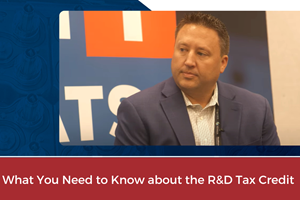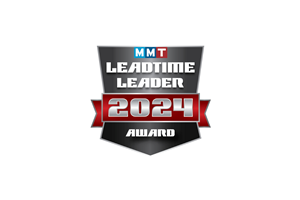To the Rescue!
If you feel that you are on a sinking ship when it comes to foreign competition, the Trade Adjustment Assistance (TAA) program can toss you a lifeboat.
For nearly 20 years the Trade Adjustment Assistance (TAA) program has aided thousands of U.S. manufacturers in strengthening and reinforcing their competitive stance - allowing them to thrive in today's global marketplace. Basically, the TAA partners with a manufacturer by offering to split the costs of projects aimed toward improving a company's competitiveness 50/50 - enabling a firm to be aggressive in implementing vast, sweeping improvements it may not have been able to do independently.
Whether you believe that foreign competition is a minor inconvenience or a major hurdle, TAA can lend a hand with these federal grants, which can result in higher sales and job growth. According to Bill Bujalos - director of the MidAtlantic Trade Adjustment Assistance Center (Blue Bell, PA) - Congress established the TAA when it passed the Trade Act in the 1970s. This began a protocol of tariff reductions and trade barrier reductions, and the TAA's purpose was to mitigate the negative impact of imports.
Today, the TAA is a federally sponsored program managed by a network of 12 non-profit organizations. These Trade Adjustment Assistance Centers (TAACs - see TAAC Offices) are staffed with experienced business professionals throughout the United States. Members of the staff will guide manufacturers through each phase of the program - from application to project completion. The program is administered by the U.S. Secretary of Commerce. To enter the program, a company must show declines in sales and employment at least partially due to import competition.
| TAAC Offices - Contact the nearest TAA office for assistance. | |||
| Northwest TAAC Phone: (206) 622-2730 Fax: (206) 622-1105 E-mail: admin@nwtaac.org |
Southwest TAAC Phone: (210) 458-2490 Fax: (210) 458-2491 E-mail: swtaac@utsa.edu |
Mid-America TAAC Phone: (816) 246-9860 Fax: (816) 246-9860 E-mail: mid-amer@taacenter.org |
New York State TAAC Phone: (607) 771-0875 Fax: (607) 724-2404 E-mail: gyouman@binghamton.edu |
| Western TAAC Phone: (213) 743-2752 Fax: (213) 746-8722 E-mail: wtaac@usc.edu |
Midwest TAAC Phone: (312) 368-4600 Fax: (312) 368-9043 E-mail: asimwtaac@aol.com |
Great Lakes TAAC Phone: (734) 998-6213 Fax: (734) 998-6224 E-mail: gltaac@umich.edu |
New Jersey TAAC Phone: (609) 292-0360 Fax: (609) 984-4301 E-mail: taac@njeda.com |
| Rocky Mountain TAAC Phone: (303) 499-8222 Fax: (303) 499-8298 E-mail: edwardh@aol.com |
Southeastern TAAC Phone: (404) 894-3858 Fax: (404) 894-0291 E-mail: setaac@edigatech.edu |
New England TAAC Phone: (617) 542-2395 Fax: (617) 542-8457 E-mail: info@netaac.org |
MidAtlantic TAAC Phone: (610) 825-7819 Fax: (610) 825-7708 E-mail: general@mataac.org |
"Basically, the money is used to hire outside consultants that come in and help them adjust, improve and upgrade their own competitiveness in virtually any area you can imagine that comes under the term general continuous improvement," Bujalos explains. "Some examples are improving marketing, sales and manufacturing capabilities; cost control; inventory; distributions and quality control."
Establishing a Need
According to Bujalos, each TAAC has someone dedicated to finding companies in need through networking, word of mouth and communication with trade associations. Then, when it is believed that a company has lost sales and employment in the past two years as a result of foreign competition; it can provide the TAA with examples of lost business as well as sales and employment declines. Once the TAA concurs that the company may be eligible for assistance, the company must provide financial disclosure for the past two fiscal years and year-to-date figures, along with employment information such as state and quarterly wages and taxes paid. This begins Phase I of the process.
"We call this proving beyond any doubt that a company has been negatively impacted," Bujalos states. "We then ask the company for a list of existing customers from whom they believe to have lost business to due to foreign competition, along with corresponding sales for those companies for the past two years, and we interview those companies to find out why they are doing business elsewhere.
"Our next step is to make a 40-page document where we give the company's argument," he continues. "We bind it and send to Washington for their approval. They look at it legally, then take the name of the company and publish it in the Federal Register for about a month and a half, so anyone who would care to comment on why the company should not receive assistance can do so. After that waiting period ends, if the company is approved, it means the government concurs with the TAA and it is bona fide negatively impacted. But that does not necessarily mean the company is going to get any money."
Work in Progress
During what Bujalos calls Phase II of the process, the TAAC will send a project manager to the company to spend the day and interview key managers and key employees to ascertain the company's strengths and weaknesses. "Then, we sit down with management and the CEO and tell them what's wrong and why they are being hammered," he states. "We decide what needs to be done, that is, what kind of professional help needs to be hired and what else has to be done to turn the company's weaknesses into strengths and make it a success. This is called the Adjustment Plan (AP) - a specific scope of work encompassing the upgrade projects necessary to turn each business aspect into a strong point, a Gantt chart of the timeframe necessary, and our best estimate of the costs involved. Your company will pay 25 percent of the cost to develop this AP.
"We put all of this information in another booklet, which is approximately 100 pages, that is submitted to the company's CEO," he adds. This document also is submitted to Washington, D.C. for approval of grant funding, which takes approximately six weeks. If funding is not available and there is a backlog, the money for the new fiscal year is distributed as follows: first to companies with approval and projects waiting, then to companies with approval, and finally to companies with submitted applications but no approval.
Phase III - following approval of the AP - is the implementation process. If funding is available, a dollar amount is set. Then, the TAAC director will call the CEO to congratulate him or her and explain how the partnership will work. Thus begins the process of turning the company around - one project at a time. "Professionals from the private sector, many through competitive bidding, will be engaged to implement the projects outlined in the AP," Bujalos explains.
"Monthly costs for the assistance will be split 50/50 between TAAC and the firm. Throughout the next two to three or more years. the company will change; and the way the company designs, manufactures, distributes and sells its products will be improved as necessary. International certifications (ISO 9000, etc.) will be attained as required. Methodologies to enhance productivity will be developed and installed. In short, the CEO and the employees will re-examine and upgrade the way business is conducted by the firm. During this phase, TAAC will monitor progress and be available for guidance as needed."
According to Bujalos, working to turn a company around one project at a time ensures that firms are conducting business smarter. "This way, the chances of the changes being permanent are much higher," he affirms.
Looking Ahead
At the present time, the program is working so well that the government is considering adding another facet to the TAA, notes Bujalos. "The general consensus is that not only are companies and manufacturers negatively impacted by foreign imports, so are communities and clusters of communities," he explains. "We'd like to be able to assist them, as it makes much more sense to spend a small amount of money preventing these companies from going belly up rather than spend 100 times more money to support the families of people who have lost their jobs.
"We hope to get more funding from Congress - we have a waiting list of people who were approved, but we just don't have the funding to help them," he continues. For 2003, the President has proposed a 23.8 percent increase in our funding, and we are hopeful that will happen."
If the numbers could speak for themselves, Bujalos' dream could become a reality (see The Survey Says below). "The return on taxpayer investment (i.e., ROTI) is 837 percent," Bujalos raves. "The bottom line is this: Through TAA for Firms it costs the American taxpayer $1,260 to save a job, and for each dollar the taxpayer invests, the rescued jobholder returns $8.37 back to Federal and State treasuries. No welfare, food stamps or unemployment compensation is used, and no worker 'retraining' or 'relocation' expenses are incurred. Quite possibly, this is the most cost-effective program that the Federal government has."
| The Survey Says |
| A recent Survey of the companies from all regions of the nation that are currently in the TAA garnered the following results. |
|
Related Content
VIDEO: What You Need to Know about the R&D Tax Credit Today
A team member from Strike Tax Advisory reviews the tax changes that are impacting the R&D credits for mold builders.
Read MoreShift in U.S. Mold Imports: Emerging Countries Gain Ground in Market Share
The dynamic nature of the U.S. mold industry's global trade landscape offers challenges and opportunities for growth.
Read MoreFAQs: What Are the Leadtime Leader Awards?
Here are answers to some frequently asked questions about MoldMaking Technology's annual Leadtime Leader Awards competition.
Read MoreThe Critical Role of Management Representatives in ISO 9001
In ISO 9001 quality management systems, the Management Representative (MR) plays a crucial role. While the 2015 version of ISO 9001 no longer mandates this position, having a trusted management member serve as an MR remains vital for streamlining operations and maintaining quality standards.
Read MoreRead Next
Reasons to Use Fiber Lasers for Mold Cleaning
Fiber lasers offer a simplicity, speed, control and portability, minimizing mold cleaning risks.
Read MoreAre You a Moldmaker Considering 3D Printing? Consider the 3D Printing Workshop at NPE2024
Presentations will cover 3D printing for mold tooling, material innovation, product development, bridge production and full-scale, high-volume additive manufacturing.
Read More







.jpg;maxWidth=300;quality=90)











